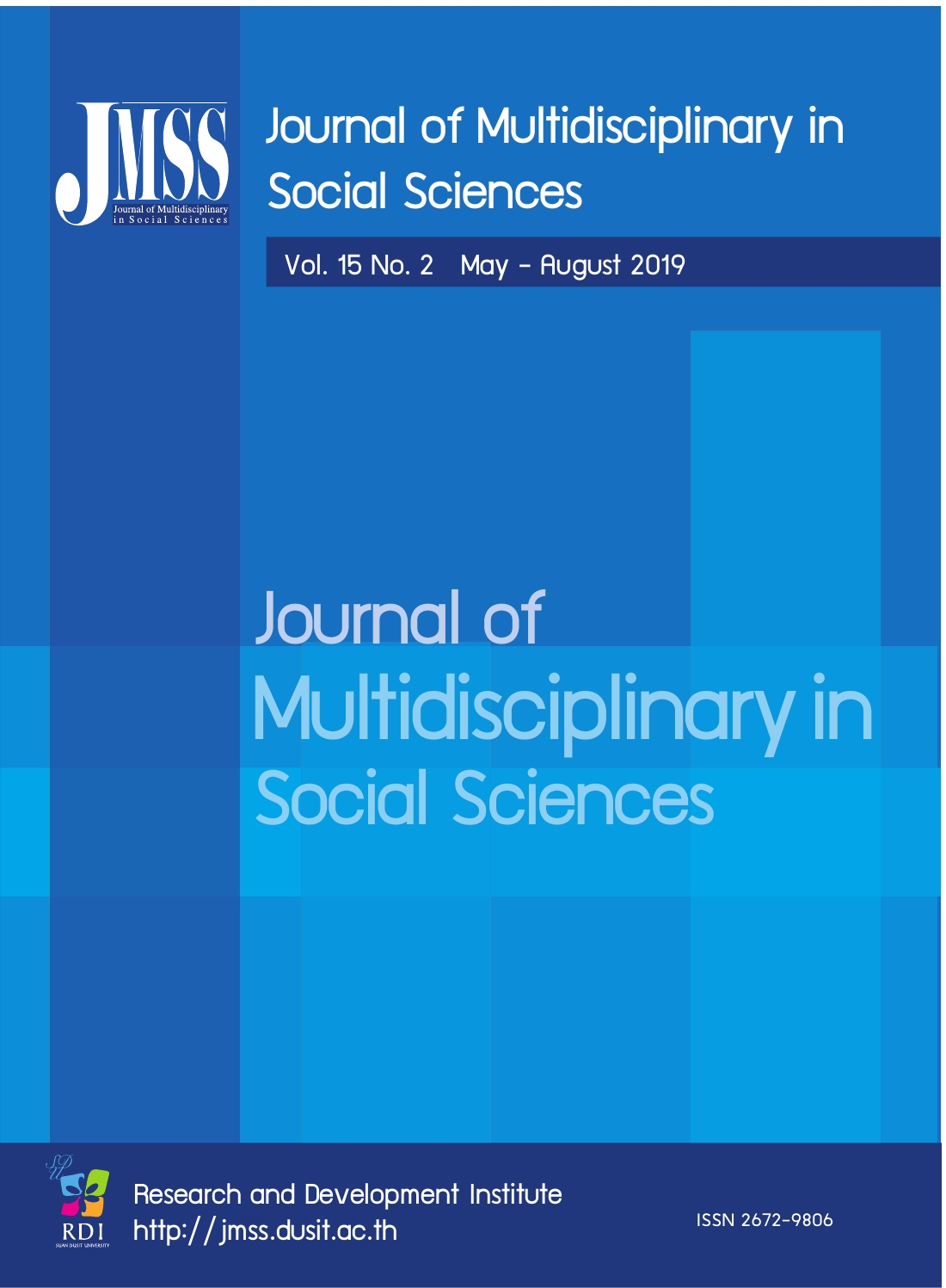A Causal Model of Safety Working Behavior in the Rubber Wood Industry
Keywords:
Causal models, Safety behavior, Rubber Wood IndustryAbstract
This survey research aimed to develop causal models of work safety behavior in the Rubber Wood Industry. The sample groups of this research were 440 manufacturing workers from 89 factories. The research instrument consisted of questionnaires with the rating scale and analysis of the data using descriptive statistic include frequency, percentage, mean, standard deviation, variables distribution and correlation, the relationship between factors and measurement Model, Confirmatory Factor Analysis: CFA and Structural Equation Model using AMOS v.21 program.
The study found that the developed causal models’ compliance with empirical data at the acceptance criteria of Goodness of Fit Index with the index value of χ2/df equal to 1.189, CFI equal to 0.996, GFI equal to 0. 965, AGFI equal to 0.935, RMSEA equal to 0.022. In addition, the results found that (1) safety climate has direct influence on safety knowledge. (2) safety knowledge has direct influence on safety behavior (3) safety climate has direct influence on safety motivation (4) safety motivation has a direct influence on safety behavior. (5) safety climate has direct influence on safety attitude (6) safety attitudes have a direct influence on safety behavior (7) personality has direct influence on safety behavior (8) personality has direct influence on safety attitudes (9) safety knowledge has direct influence on safety motivation. (10) safety motivation has a direct influence on safety attitudes. The suggestions from the research are to study work safety behavior of the other sample groups or in other industrial areas with the same variables. The government and organizations may use the findings as a guideline for safety protection and help in resolving problems concerned with safe working behavior.
References
Chockalingam, S. & Sornakumar, T. (2011). An effective tool for improving the safety performance in Indian construction industry. European Journal of Scientific Research, 53(4), 533-545.
Deci, E. L. & Ryan, R. M. (2008). Self-determination theory: A macro-theory of human motivation, development and health. Canadian Psychology, 49(3), 182-185.
Department of Industrial works, Ministry of Industry. (2013). Industrial accounts. Retrieved November 10, 2013, from http://www.diw.go.th/hawk/data/factype.php
Department of Health, Ministry of Public Health. (2010). Clean Safety and Safe Environment. The War Veterans Organization of Thailand Publication: Nonthaburi. Fritz, C. & Sonnentag, S. (2009). Antecedents of day-level proactive behavior: a look at job stressors and positive affect during the workday. Journal of Management Information Systems, 35(1), 94-111.
Hair, J. F., Black, W.C., Babin, B.J. & Anderson, R.E. (2010). Multivariate Data Analysis. Seventh Edition. New Jersey: Prentice Hall.
Hedlund, A., Ateg, M., Andersson, I. M., & Rosen, G. (2010). Assessing motivation for work environment improvements: Internal consistency, reliability and factorial structure. Journal of Safety Research, 91(2), 145-151.
Henning, J. B., Stufft, C., Payne, S. C., Bergman, M. E., Mannan, M. S. & Karen, N. (2009). The influence of individual differences on organizational safety attitudes. Safety Science, 47(3), 337-345.
Hughes, P. (2008). Introduction to health and safety in construction. Boston: Butterworth-Heinemann.
International Labour Office. (2013). Domestic Workers Across the World: Global and Regional Statistics and the Extent of Legal Protection. Geneva: International Labour Office.
Jeffries, F. L. (2011). Predicting safety related attitudes in the workplace: The influence of moral maturity and emotional intelligence. Retrieved March 2, 2011, from http://www.uaa.alaska.edu/cbpp/Research/upload/Jeffries-JBAM-2011.pdf
Kline, R. B. (2011). Principles and practice of structural equation modeling. New York: The Guilford Press.
Manion, J. (2003). Joy at Work! Creating a positive workplace. Journal of Nursing Administration, 33(12), 652-659.
Neal, A. & Griffin, M. A. (2006). A study of the lagged relationships among safety climate, safety motivation, safety behavior, and accidents at the individual and group levels. Journal of Applied Psychology, 91(4), 946-953.
Nickell, G. S. & Hinsz, V. B. (2011). Having a conscientious personality helps an organizational climate of food safety predict food safety behavior. New York: Nova Science.
National Institute of Development Administration Research Center. (2010). Thailand Quality of Life Report 2010. Retrieved December 30, 2010, from http://re.nida.ac.th/ th/research/30-2553/120-2553.
National Statistical Office Thailand. (2014). Statistical Development plan for Southern Andaman province. Retrieved December 20, 2017, from http://osthailand.nic.go.th/masterplan_area
Osuansri, N. (2011). The related factor of working life quality in female worker in the factory, Nakhon Ratchasima province (Master’s thesis). Chonburi: Burapha University.
Probst, T. M. & Brubaker, T. L. (2001). The effects of job insecurity on employee safety outcomes: Crosssectional and longitudinal explorations. Journal of Occupational Health Psychology, 6(2), 139-159.
Phoo-ngernkham, K. (2009). Strategies for developing safety behavior for manufacturing workers : Case study of Quality Cartons Co.,Ltd., Samut Prakarn Province (Master ’s thesis). Chachoengsao: Rajabhat Rajanagarindra University.
Pornchaisuree, S. (2012). Bright future for Rubber Wood Industry. Retrived Auguest 11, 2014, from http://news.voicetv.co.th/business/58235.html
Siu, O. L., Phillips, D. R. & Leung, T. W. (2004). Safety climate and safety performance among construction workers in Hong Kong: The role of psychological strains as mediators. Accident Analysis & Prevention, 36(3), 359-366.
Ungsuchot S., Vijitwanna S. & Pinyophanuwat. R. (2011). Research statistical analysis in social science and behavior science: techniques for using LISREL programs. Jaroendee mankong print press.
Workmen’s Compensation Foundation (2014). Statistics for workplace hazards, illnesses 2013. Retrieved January 20, 2015, from http://www.sso.go.th/wpr/category.jsp?lang=th&cat=801.
Downloads
Published
How to Cite
Issue
Section
License

This work is licensed under a Creative Commons Attribution-NonCommercial-NoDerivatives 4.0 International License.








